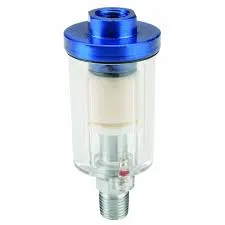Nov . 17, 2024 09:28 Back to list
hydraulic trim cylinder product
Understanding Hydraulic Trim Cylinders
Hydraulic trim cylinders are essential components in various applications, especially in marine industries and heavy machinery. Their primary function is to control the angle and position of movable parts, enabling precise adjustments in equipment and enhancing overall performance. This article delves into the significance, functionality, and applications of hydraulic trim cylinders.
What is a Hydraulic Trim Cylinder?
At its core, a hydraulic trim cylinder is a type of linear actuator that utilizes hydraulic fluid to create motion. It consists of a cylinder, piston, along with hydraulic fluid that fills the cylinder. When hydraulic pressure is applied, the fluid moves the piston, thereby converting hydraulic energy into mechanical work. This movement is crucial for adjusting the trim angle of boats, aircraft, and various machines.
Importance in Marine Applications
In the marine industry, hydraulic trim cylinders play a vital role in optimizing vessel performance. By adjusting the trim angle, boats can achieve better lift and efficiency, reducing drag and improving fuel economy. For example, in small boats and yachts, trim cylinders control the angle of the drive unit to ensure that the hull is positioned optimally in the water. This not only enhances performance but also improves safety by preventing the boat from porpoising or bowing up excessively.
Moreover, larger vessels utilize hydraulic trim systems to maintain stability under varying load conditions. By controlling the trim angle dynamically, operators can ensure that the vessel remains balanced, which is critical for handling rough sea conditions.
Functionality and Mechanism
Hydraulic trim cylinders operate based on the principles of hydraulics, which uses incompressible fluid to transmit force. The basic mechanism involves the following components
1. Cylinder The outer casing that houses the hydraulic fluid and piston. 2. Piston A movable component inside the cylinder that converts hydraulic pressure into linear motion. 3. Hydraulic Fluid Incompressible fluid, typically oil, that transmits force from the hydraulic pump to the cylinder.
When the hydraulic pump generates pressure, it pushes the hydraulic fluid into the cylinder. This pressure forces the piston to move, which in turn moves the connected trim tab or device. The operator can control the fluid pressure and direction, allowing for precise adjustments.
hydraulic trim cylinder product

Applications Beyond Marine
While they are widely recognized in the marine sector, hydraulic trim cylinders also find applications in various industries
1. Aerospace Trim cylinders are employed in aircraft to adjust control surfaces like flaps and ailerons, ensuring optimal performance during flight. 2. Construction Heavy machinery, such as excavators and cranes, use hydraulic cylinders to adjust equipment angles and enhance operational efficiency. 3. Automotive Some specialized vehicles use hydraulic trim systems for adjusting body angles or suspension settings, contributing to improved handling and comfort.
Advantages of Hydraulic Trim Cylinders
Hydraulic trim cylinders offer several advantages over mechanical systems
1. Precision They provide fine control over angle adjustments, which is vital in applications requiring exact positioning. 2. Power Hydraulic systems can generate substantial force compared to mechanical systems, allowing for more robust applications. 3. Durability Properly maintained hydraulic cylinders typically have a longer lifespan and can handle harsh environments better than their mechanical counterparts.
Maintenance and Care
To ensure optimal performance and longevity, routine maintenance of hydraulic trim cylinders is critical. This includes
- Regularly checking for leaks in hoses and seals. - Inspecting hydraulic fluid levels and quality. - Cleaning the exterior of the cylinder to prevent contamination. - Monitoring the system for unusual noises or sluggish movement that could indicate wear or damage.
Conclusion
Hydraulic trim cylinders are crucial components that enhance the functionality, safety, and performance of various machines and vehicles, particularly in the marine industry. Their ability to provide precise control and adjust positions effectively makes them an indispensable technology across multiple sectors. By understanding their design, functionality, and maintenance, users can optimize the advantages these systems offer, ensuring reliable performance in demanding applications. As technology continues to advance, the role of hydraulic trim cylinders will likely expand, integrating more seamlessly with innovative systems and enhancing operational capabilities further still.
-
High-Performance Set of 50/60-45-290 471 | Durable & Reliable Components
NewsAug.26,2025
-
Efficient Pallet Truck Power Units - Reliable Hydraulic Systems
NewsAug.25,2025
-
Premium Set of 50/60-45-290 471 Parts | High Performance
NewsAug.24,2025
-
Efficient & Reliable Double Acting Power Unit | Hydraulic Solutions
NewsAug.23,2025
-
1.5 Ton Turbocharged Cylinder 80/95-40/60-35-124 | High Performance
NewsAug.22,2025
-
High-Performance Fork Lift Hydraulic Power Units
NewsAug.21,2025
